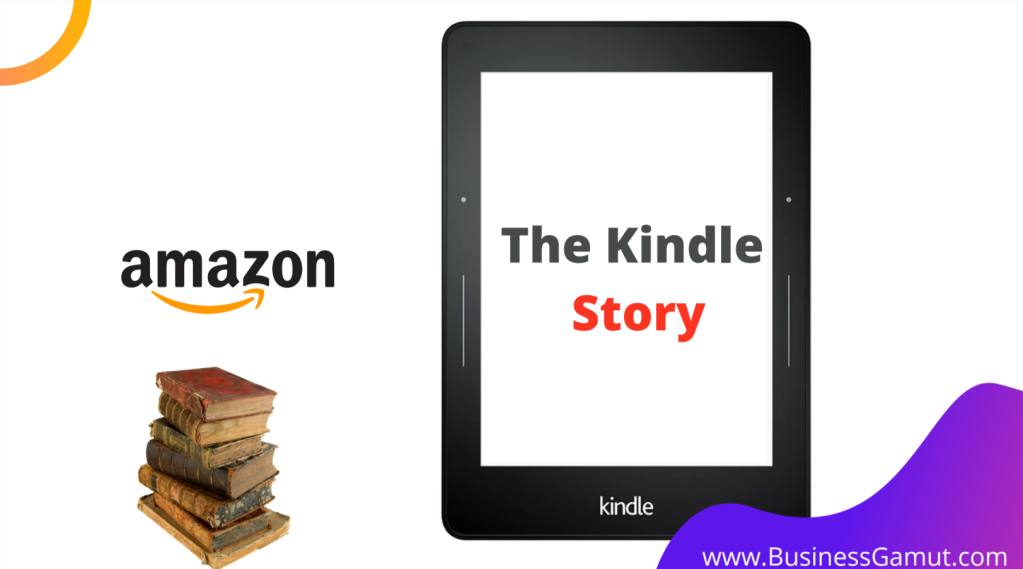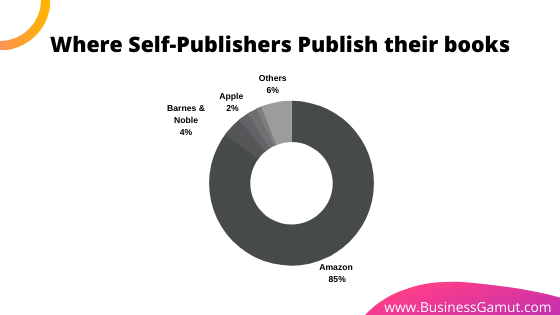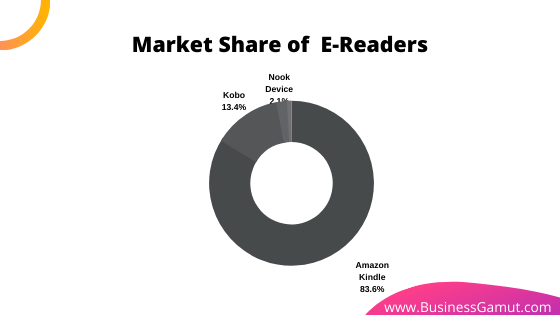Back in the year 1995, a new company called Amazon launched an online marketplace for books. Within four years since its inception, the company diversified its product offerings to music and videos, video games etc. Today, Amazon.com is the most valuable retail e-commerce company in the United States of America, which focuses primarily on e-commerce but also on cloud computing, digital streaming and artificial intelligence. The firm has been innovators over the years, and one such product which was designed by the company is Amazon Kindle.

The story of Amazon Kindle
The second biggest business of Amazon was the online selling of music compact discs(CD). This business was decimated by the launch of Apple iPod in the year 2001.
Jeff Bezos, the founder of Amazon, took the lesson from iPod & iTunes and applied it to books. This was Amazon’s first foray into the hardware business. By the year 2004, A technical team was set up for the development of an e-reader. It was the first of its kind. Even though Amazon identified that a large number of book reader love the touch and feel of a physical copy of a book, Jeff Bezos saw an opportunity with the product he was developing. Even today, a lot of book readers say that the smell of a new book is essential to them. But Jeff Bezos identified a large segment of the market that felt, carrying books is very difficult. Readers also wanted to make the experience of buying a book more accessible. This led to the launch of product called Amazon Kindle in the year 2007.
Since then there have been different versions of Kindle namely Kindle (2007), Kindle 2 (2009), Kindle DX (2009), Kindle DX Graphite (2010), Kindle Keyboard (2010), Kindle 4 (2011), Kindle Touch (2011), Kindle 5 (2012), Kindle Paperwhite (2012), Kindle Paperwhite 2 (2013), Kindle 7 (2014), Kindle Voyage (2014), Kindle Paperwhite 3 (2015), Kindle Oasis (2016), Kindle 8 (2016), Kindle Oasis 2 (2017), Kindle Paperwhite 4 (2018), Kindle 10 (2019) and Kindle Oasis 3 (2019).
Since its inception, there have been 20 variants within 13 years, which shows how much importance the firm gives to the product. The development team has been successful in making the reading experience comfortable by incorporating all the possible technologies in their product.
Revenue Model of Amazon Kindle
Kindle generates revenue from three primary sources –
- Sale of the device
- Display of Ads on the device
- Sale of the contents
Even though there are different streams of revenue, the value is majorly captured from the sales of the ebooks which is the essence of this business model. The purchase of devices won’t yield significant margins. It might not be even break-even if only the sales of the devices are considered. But this is compensated by the sales of ebooks. The sales of eBook contents are the essence of this business model, and this is what keeps the Kindle business model rolling through effectively capturing value. Amazon also reports that the number of books read by its users quadrupled after the purchase of the device.
Amazon does not use a freemium model exactly, but they provide opportunities to read a book for free. A Kindle user can borrow ebooks from a friend’s Kindle Library up to 14 days. Recently, Amazon has introduced Kindle Unlimited, which allows you to read unlimited books from over 700,000 titles by paying $9.99 per month, which is a Netflix-like freemium model as well.
The road ahead
According to statista.com, the revenue in the ebooks segment is projected to reach $16,647 million in the year 2020. The CAGR is projected to be 3.7%, and the revenue is expected to reach $19,997 million by the year 2025.
It is also reported that self-publishers claim that Amazon represents 85% of their ebook sales.

Euromonitor data shows that Kindle has an 83.6% share of the U.S. e-readers market while Kobo, at No. 2, has a 13.4% share. (In another worrying sign for Barnes & Noble, the data shows its Nook device holds only a 2.1% share.)

Factors such as the increasing number of portable readable devices such as smart-phones & tablets, the emergence of digital education and interactive learning systems, and rising environmental concerns over cutting trees are propelling the market growth. However, lack of awareness about ebook technology can hinder the market growth. Moreover, low internet and mobile penetration in developing nations are expected to provide new growth opportunities to the market.
Lessons
It is 13 years since Amazon launched a successful product called Kindle. Nevertheless, the thinking team has had its own struggle to make it what it is today. The idea of Jeff Bezos to start an e-Reader was not welcomed by all. But his persistence and his belief in the plan had, in fact, changed the dynamics of the industry.
Amazon was already in the book business. The launch of this product meant that Amazon is going to cannibalize its first business. At the time of conceptualization of Kindle, 50% of Amazon’s revenue was from books alone. But the founder of Amazon did not have any emotional attachments and had a very practical approach towards the business he was doing. He was quick to identify a need of the customer segment and deliver a product which will make the reading experience comfortable.
There were other start-ups which had failed in developing good ebook readers. But these failures did not stop Jeff Bezos from trying to create a lighter, portable and easy to sync product. And once the product was out in the market, the team ensured that there are regular updates so that it does not go out-of-date.
Even though physical books are one of the greatest inventions ever, Jeff Bezos was able to inspire his team at Amazon to work towards materializing his idea through sheer persistence and has resulted in the formation of 2 eras – Pre-Kindle and Post-Kindle.
Hope you guys enjoyed reading the article, do share your views in the comments below. Also, share this story with the Kindle readers who would love to know the business behind the device they love so much. Business Gamut Signing off!




Leave a comment